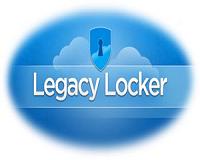| . |  |
. |
Tel Aviv, Israel (SPX) Aug 10, 2010 Unfortunately, when ancient kings sent letters to each other, their post offices didn't record the sender' return address. It takes quite a bit of super-sleuthing by today's archaeologists to determine the geographical origin of this correspondence - which can reveal a great deal about ancient rulers and civilizations. Now, by adapting an off-the-shelf portable x-ray lab tool that analyzes the composition of chemicals, Prof. Yuval Goren of Tel Aviv University's Department of Archaeology and Ancient Near Eastern Civilizations can reveal hidden information about a tablet's composition without damaging the precious ancient find itself. These x-rays reveal the soil and clay composition of a tablet or artefact, to help determine its precise origin. But Prof. Goren's process, based on x-ray fluorescence (XRF) spectrometry, can go much further. Over the years, he has collected extensive data through physical "destructive" sampling of artefacts. By comparing this data to readouts produced by the XRF device, he's built a table of results so that he can now scan a tablet - touching the surface of it gently with the machine - and immediately assess its clay type and the geographical origin of its minerals. The tool, he says, can also be applied to coins, ancient plasters, and glass, and can be used on site or in a lab. He plans to make this information widely available to other archaeological researchers.
Preserving artefacts for the future Traditionally archaeological scientists have had to take small samples of an artefact - a chip or a slice - in order to analyze its soil and clay composition. But as more and more museums and archaeology sites ban these destructive means of investigating archaeological finds, Prof. Goren's new tool may help save archaeological structures while solving some of its deepest mysteries. "It's become a big ethical question," says Prof. Goren. "Many museums will not allow any more physical sampling of artefacts, and it's especially problematic for small tablet fragments and stamps which cannot be broken in the process. I had to find another way to know what these artefacts were made of."
Records from a Jesubite King Its style suggests that it is a rough and contemporary tablet of the Amarna letters - letters written from officials throughout the Middle East to the Pharaohs in Egypt around 3,500 years ago, pre-biblical times. Using his device, Prof. Goren was able to determine that the letter is made from raw material typical to the Terra Rossa soils of the Central Hill Country around Jerusalem. This determination helped to confirm both the origin of the letter and possibly its sender. "We believe this is a local product written by Jerusalem scribes, made of locally available soil. Found close to an acropolis, it is also likely that the letter fragment does in fact come from a king of Jerusalem," the researchers reported, adding that it may well be an archival copy of a letter from King Abdi-Heba, a Jesubite king in Jerusalem, to the Pharaoh in nearby Egypt. Prof. Goren is also an expert at uncovering archaeological forgeries and has worked on the alleged ossuary, or bone box, of Jesus' brother James.
Share This Article With Planet Earth
Related Links Tel Aviv University's All About Human Beings and How We Got To Be Here
 Internet lifestyles leave digital estates for descendants
Internet lifestyles leave digital estates for descendantsSan Francisco (AFP) Aug 7, 2010 As lives move increasingly online, Legacy Locker is building virtual safe-deposit boxes where people can leave digital estates for descendants. "I have young children that can't read yet," said LegacyLocker.com founder Jeremy Toeman. "One day my blog will have meaning to them in the same way you find an old photo of your grandfather and wonder what the story was." Toeman launched his sta ... read more |
|
| The content herein, unless otherwise known to be public domain, are Copyright 1995-2010 - SpaceDaily. AFP and UPI Wire Stories are copyright Agence France-Presse and United Press International. ESA Portal Reports are copyright European Space Agency. All NASA sourced material is public domain. Additional copyrights may apply in whole or part to other bona fide parties. Advertising does not imply endorsement,agreement or approval of any opinions, statements or information provided by SpaceDaily on any Web page published or hosted by SpaceDaily. Privacy Statement |